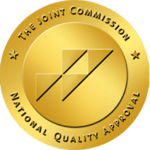Many people associate addiction treatment with residential rehab. In this setting, clients spend thirty to ninety days living in a treatment center where they will eat, sleep, and participate in group and individual therapy. However, there are several other models of treatment. Outpatient addiction treatment is a good option for those who have completed an inpatient program. Types of outpatient treatment include partial hospitalization programs (PHP) and intensive outpatient programs (IOP).
Making the transition from an inpatient drug rehab center to outpatient treatment can be simple if you go through treatment at the right recovery center. For example, a luxury treatment center will provide a higher level of support for those who are taking this step on their road to recovery.
Inpatient vs. Outpatient Addiction Treatment
During inpatient treatment, clients live in a recovery center. In this supportive environment, they take part in therapy and participate in activities like fitness classes, recreational outings, and art therapy. An inpatient treatment program is often the best first step in addiction treatment because it offers 24/7 support and accountability. Some addiction treatment programs last for as little as 30 days, while others can last for months or even a year.
In outpatient treatment, however, clients live at home or in sober housing and participate in treatment during the day. Outpatient treatment is often the best choice for those who have completed an inpatient program. It provides a stepping stone back to everyday life. In outpatient treatment, clients can continue to build healthy coping skills and strategies. This will help maintain their sobriety long-term.
Combining Your Options – PHP and IOP
Instead of looking at the situation as inpatient vs. outpatient addiction treatment, it can be helpful to approach these treatment options as two steps in the journey to recovery. Generally, treatment facilities will offer help for the transition to outpatient care from an inpatient program. A partial hospitalization program (PHP) is designed for people who need structure during the day but also have a supportive home environment. Some details about this program include:
- The program takes place during the day on Mondays through Fridays
- Evenings and weekends are spent at home
- Clients participate in counseling, life skills therapy, and other activities
- Days are fully structured
For those who have families and jobs, the next step could be completely outpatient but may include another level of care – an intensive outpatient program. Sometimes this program is the right choice over a full inpatient treatment. This is because the individual has obligations that require being at home, such as a job or children. Yet they need a strong amount of support and accountability. This option provides both.
There is no cookie-cutter type of addiction treatment. Every addiction is as unique as the person who is experiencing it. By providing many different options, we not only allow for varying needs but also make it possible to move from one type of program to another depending on where the individual is on the road to recovery.
Some clients use this movement as a way to measure their success in their minds. In the end, what matters isn’t what type of program you enter. What matters most is that it is the type that fits your needs and will help you feel supported as you start and continue on this portion of your life. Recovery is a process that requires different approaches at different points of the journey.
Contact Westwind Recovery® for the Best Transitional Treatment Options
Transitioning between treatment forms could be challenging, but at Westwind Recovery®, we try to make this transition as easy as possible. Our recovery center provides a high level of support during the transition from a previous treatment type to partial hospitalization programs, intensive outpatient programs, and sober living housing. Reach out to our team to find out how we can help you heal. Contact our program to discuss our transitional treatment options and the therapies that are right for you. A brighter future is ahead.

Dr. Deena is the Chief Clinical Officer of Westwind Recovery®, an award-winning outpatient treatment center in Los Angeles where she oversees the clinical and administrative program and treatment methods. Dr. Deena is a doctor of psychology and licensed clinical social worker since 1993. LCSW #20628. Originally from the East Coast, Dr. Deena has worked running treatment centers, worked as a therapist in psychiatric hospitals as well as school settings and currently has a thriving private practice in the LA area. Dr. Deena has appeared regularly on the Dr. Phil Show as an expert since 2003. She has also been featured on many other TV shows, podcasts and has contributed to written publications as well as podcasts.



